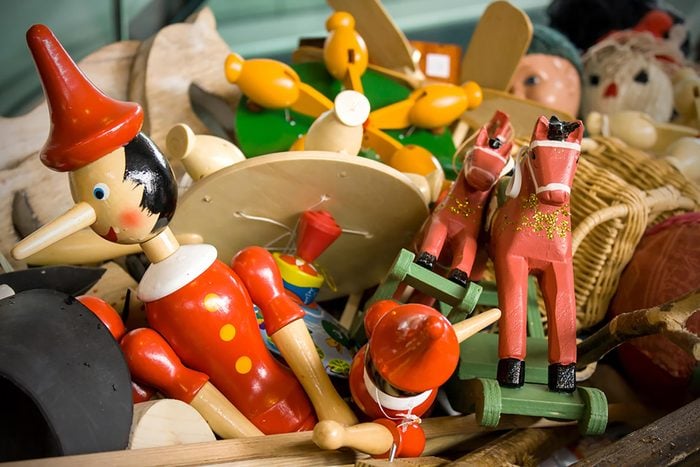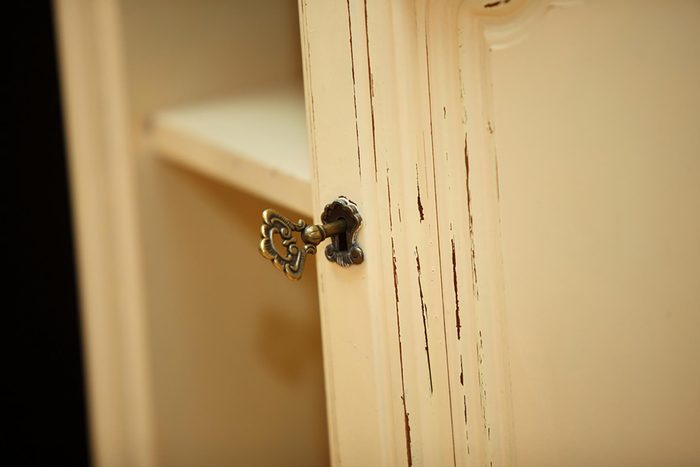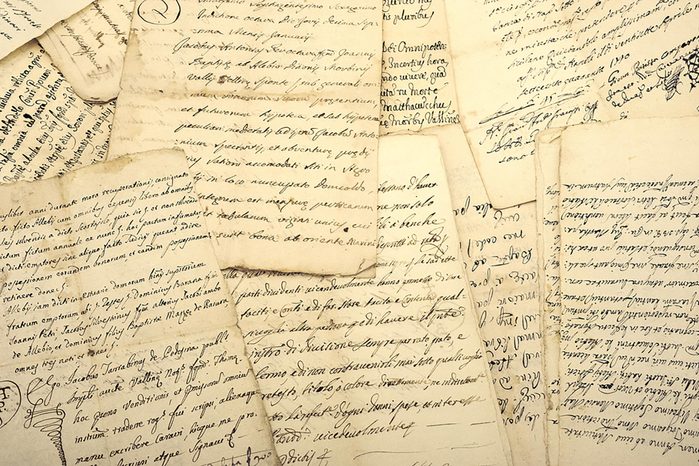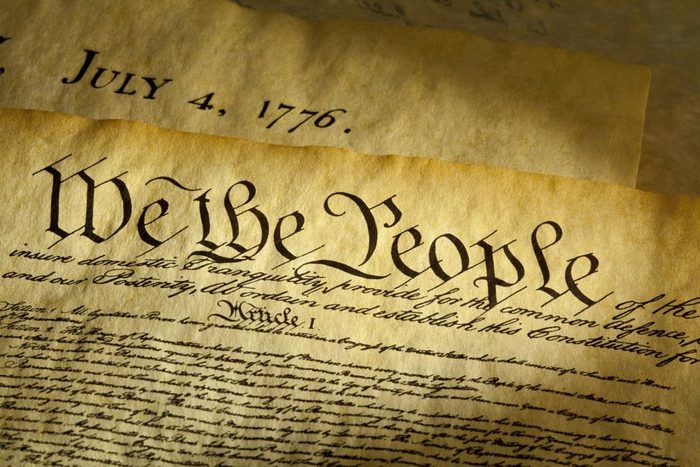
Grandma’s favorite painting
Art isn’t always in the eye of beholder when it comes to spotting something of value. When Linda Magnusson, ASA PP; Antiques & Decorative Art of the Magnusson Group in Morristown, New Jersey, showed up for a consultation with a client, it was her keen eye that spotted a forgotten painting hidden behind a piano. “Ironically, it was the painting that my client didn’t like and had forgotten about that turned out to be the most valuable,” Magnusson notes. Her client ended up with a six-figure payout!

Old toys can have a second chance
In the movie Toy Story 3, Woody, Buzz Lightyear and their fellow stuffed and plastic friends get relegated to abuse after being mistakenly discarded at a daycare center. Perhaps if Andy had sold them on eBay before heading off to college he would have made some cash to buy books. Sandy Graves of Mountainside New Jersey says “I was cleaning out my daughter’s playroom. Since she is now 14-year old, stuff has been collecting dust, and I was going to toss this old dollhouse. I ended up putting it on eBay and made over $100 because it was a vintage Little Tikes dollhouse. It was well-loved by my daughter, my niece (now 20) and originally by my brother-in-law’s niece (now 27). Now a lovely little girl in Illinois will enjoy it!”

Found money
Some would agree that money found in between couch cushions or while doing the laundry automatically fall under the “finders keepers losers weepers” clause, but what about money in the ceiling? When Josh Ferrin of Bountiful, Utah went poking around the garage of the new home he’d recently purchased, he came across a “hidey-hole” in the ceiling filled with boxes of rolled up cash. After he and his family spent a few hours counting up the $45,000 worth of loot he decided to return it all to the previous owners. “I’ve got two boys and we teach them to be honest and to do what is right and I knew this was a teachable moment that I would never get back again,” Ferrin told ABC News.

The case of the hidden drawer
Estate sales can be a lot of fun, especially if you love the thrill of hunting for valuable antiques like Emil Knodell who would frequent weekend sales. He was thrilled to nab an antique chest of drawers from the late 1800s that had a lot of character and history. But when trying to get the unwieldy piece into his truck it sounded like a “slot machine,” Jeffrey Allen, of Premier Estate Sales Network, who was trying to help him, told the Houston Chronicle. A hidden drawer that looked like it was a part of furniture turned out to be full of bling from Civil War medals to diamond rings. Hitting pay dirt like that may make some people find the nearest auction house, but Knodell was more excited to return the treasure to the family that owned the chest. “I bought the chest of drawers; I didn’t buy (the secret contents),” he told the newspaper. “The deceased man’s family needed to have the opportunity to decide what they wanted to do with the items.”
Next, check out these vintage old computers that could be worth a fortune.

Historical shopping lists
Sometimes even an antique shopping list can have historical value. A 400-year-old scrap of paper was discovered listing pewter spoons, a frying pan, and “greenfish.” The paper was wedged under the floorboards of Knole, a historic country home in Kent, England. A volunteer with the archaeology team at Knole that was restoring the house made the discovery. Two 17th century letters were also found under another attic floorboard and stuffed into the ceiling. The Smithsonian notes the full text reads: Mr Bilby, I pray p[ro]vide to be sent too morrow in ye Cart some Greenfish, The Lights from my Lady Cranfeild[es] Cham[ber] 2 dozen of Pewter spoon[es]: one greate fireshovell for ye nursery; and ye o[t]hers which were sent to be exchanged for some of a better fashion, a new frying pan together with a note of ye prises of such Commoditie for ye rest. It dates back to 1633! Are you keeping old shopping lists?

The Unsinkable Titanic
Gary Whyte of Mountainside, New Jersey was cleaning out his mother’s house after she died when he came across what looked like some old newspapers she’d stashed away. “I found a large envelope with two original newspapers. One was the New York Daily News with the day one story on JFK’s assassination,” says Whyte. “The other was a full New York Times 1912 newspaper with the ‘Sinking of the Titanic.'” That full New York Times newspaper was recently framed by the Liberty Science Center and placed in the Titanic Exhibit for seven months. Items from the doomed ship have fascinated collectors for years. One of the most heart wrenching scenes from the 1997 James Cameron movie Titanic (and there were many) features the band playing on as the doomed ship sinks. This is based on true survivor recollections about of the disaster. The violin played by the bandmaster of the Titanic, Wallace Hartley, was rumored to have been found strapped to his body as he floated out to sea. But it wasn’t until 2006 that the sentimental and historical instrument was unearthed in an attic. Rigorous testing by Henry Aldridge and Son proved the violin to be Hartley’s. In 2013, it sold for $1.7 million. A letter Wallace Hartley wrote to his parents during his first day on the Titanic also sold for $185,968.80. “This is a fine ship & there ought to be plenty of money on her,” he wrote. “We have a fine band & the boys seem very nice.” Don’t miss these secrets to scoring the best deal according to antiquing experts.

A rare copy of the Declaration of Independence found across the Atlantic
The New York Post reported researchers discovered a copy of the Declaration of Independence in storage at a record office in southern England. According to a press release from Harvard University, the document being called “The Sussex Declaration,” apparently dates back to the 1780s. It is believed to have once belonged to the Third Duke of Richmond, known as the “Radical Duke” for his support of the Americans during the Revolution. The historic find is on the same “ornamental scale” as the Matlack Declaration, housed in the National Archives, the release said. In August 2015 researcher Emily Sneff, of the Declaration Resources Project, was attempting to create a database on every known edition of the Declaration, she told The Harvard Gazette. The document caught her attention because of the catalog listing that it was a manuscript on parchment. Her and Harvard’s Danielle Allen began to investigate. After reviewing a photo of the document from the archives she realized it was different than any other copy she had ever seen before. “When I looked at it closely, I started to see details, like names that weren’t in the right order—John Hancock isn’t listed first, there’s a mark at the top that looks like an erasure, the text has very little punctuation in it—and it’s in a handwriting I hadn’t seen before,” she added. “As those details started adding up, I brought it to Danielle’s attention and we realized this was different from any other copy we had seen.” The researchers will continue to study how the document reached England, as well as attempt to decipher some text that appears to be scraped away at the top of the parchment, according to the Gazette.
Next, see if you can guess the uses for these antique objects.